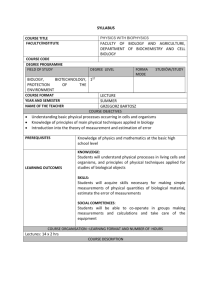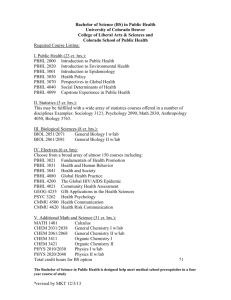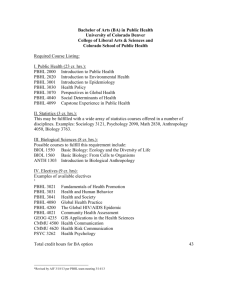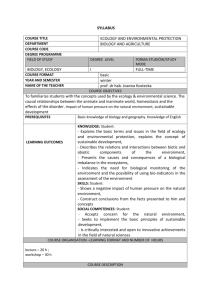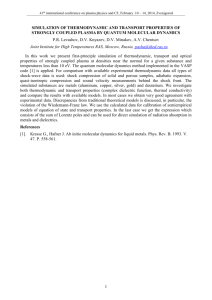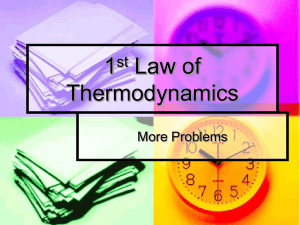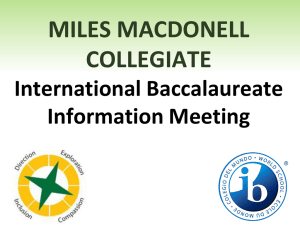SYLLABUS COURSE TITLE PHYSICAL CHEMISTRY FOR
advertisement
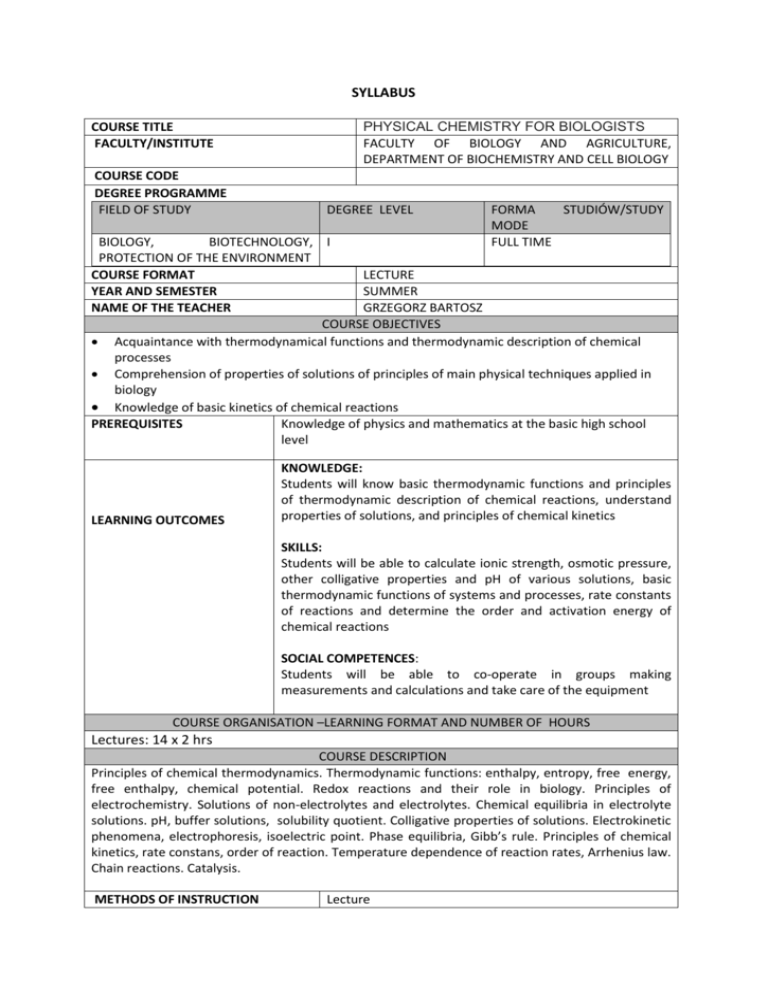
SYLLABUS COURSE TITLE FACULTY/INSTITUTE COURSE CODE DEGREE PROGRAMME FIELD OF STUDY PHYSICAL CHEMISTRY FOR BIOLOGISTS FACULTY OF BIOLOGY AND AGRICULTURE, DEPARTMENT OF BIOCHEMISTRY AND CELL BIOLOGY DEGREE LEVEL FORMA STUDIÓW/STUDY MODE FULL TIME BIOLOGY, BIOTECHNOLOGY, I PROTECTION OF THE ENVIRONMENT COURSE FORMAT LECTURE YEAR AND SEMESTER SUMMER NAME OF THE TEACHER GRZEGORZ BARTOSZ COURSE OBJECTIVES Acquaintance with thermodynamical functions and thermodynamic description of chemical processes Comprehension of properties of solutions of principles of main physical techniques applied in biology Knowledge of basic kinetics of chemical reactions PREREQUISITES Knowledge of physics and mathematics at the basic high school level LEARNING OUTCOMES KNOWLEDGE: Students will know basic thermodynamic functions and principles of thermodynamic description of chemical reactions, understand properties of solutions, and principles of chemical kinetics SKILLS: Students will be able to calculate ionic strength, osmotic pressure, other colligative properties and pH of various solutions, basic thermodynamic functions of systems and processes, rate constants of reactions and determine the order and activation energy of chemical reactions SOCIAL COMPETENCES: Students will be able to co-operate in groups making measurements and calculations and take care of the equipment COURSE ORGANISATION –LEARNING FORMAT AND NUMBER OF HOURS Lectures: 14 x 2 hrs COURSE DESCRIPTION Principles of chemical thermodynamics. Thermodynamic functions: enthalpy, entropy, free energy, free enthalpy, chemical potential. Redox reactions and their role in biology. Principles of electrochemistry. Solutions of non-electrolytes and electrolytes. Chemical equilibria in electrolyte solutions. pH, buffer solutions, solubility quotient. Colligative properties of solutions. Electrokinetic phenomena, electrophoresis, isoelectric point. Phase equilibria, Gibb’s rule. Principles of chemical kinetics, rate constans, order of reaction. Temperature dependence of reaction rates, Arrhenius law. Chain reactions. Catalysis. METHODS OF INSTRUCTION Lecture REQUIREMENTS AND ASSESSMENTS GRADING SYSTEM Written open test (30 questions) Grade 5, > 94% ; Grade 4.5, 90-94%; Grade 4, 80-89%; Grade 3.5, 70-79%; Grade 3, 60-69% correct answers TOTAL STUDENT WORKLOAD NEEDED TO ACHIEVE EXPECTED LEARNING OUTCOMES EXPRESSED IN TIME AND ECTS CREDIT POINTS Lectures: Indoor work: Exam: In total: English n.a. LANGUAGE OF INSTRUCTION INTERNSHIP MATERIALS 28 hrs 30 hrs 2 hrs 60 hrs 3 ECTS PRIMARY OR REQUIRED BOOKS/READINGS: H. Kuhn, H.-D. Forsterling, D.H. Waldeck (2009) Principles of Physical Chemistry. Wiley G.G. Hammes (2007) Physical Chemistry for the Biological Sciences. Wiley SUPPLEMENTAL OR OPTIONAL BOOKS/READINGS: R. Chang (2005) Physical Chemistry for the Biosciences. University Science Books
